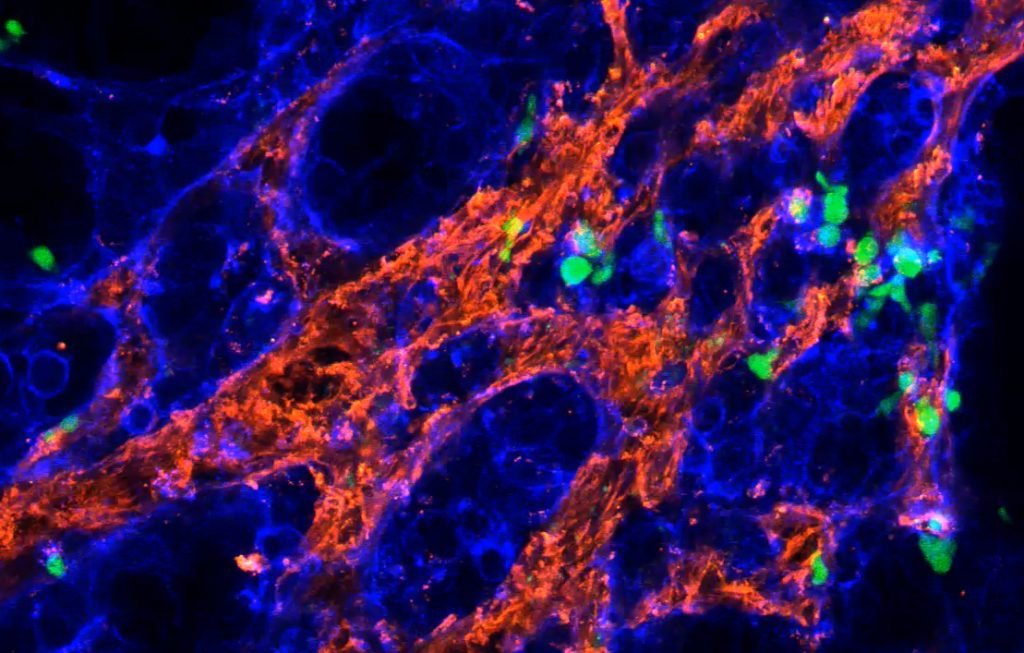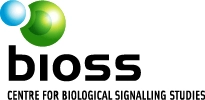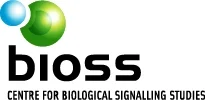Unlike conventional αβ T cells, γδ T cells recognize antigens independently of MHC presentation, making them attractive for off-the-shelf immunotherapies.
Harnessing γδ T Cells for Cancer Therapy
- We are elucidating the initial steps of γδ TCR activation (Siegers et al 2007; Dopfer et al 2014; Swamy et al 2016) to design novel γδ TCR-based immunotherapies and are actively developing strategies to target oncogenic signaling and enhance γδ T-cell therapies (Schamel et al 2024; Dang et al 2021; Juraske et al 2018).
- We demonstrated that γδ T cells effectively recognize and kill patient-derived triple-negative breast cancer (TNBC) stem cells, which are major drivers of metastasis, chemoresistance, and relapse. By engineering pro-migratory γδ T cells, we enhanced tumor infiltration. However, cancer stem cells evaded γδ T-cell recognition by losing stemness-associated ligands, a resistance mechanism that we successfully reversed using pharmacological intervention (Raute et al 2023).
- We found that γδ T cells can be reprogrammed using TRuC (TCR fusion constructs) technology, improving their ability to recognize and kill hematopoietic and solid tumor cells (Juraske et al 2023).

References
Beringer DX, Straetemans T, Minguet S, Riillo C, Lynch L, Sebestyen Z, Kuball J (2025) Disrupting the balance between activating and inhibitory receptors of γδT cells for effective cancer immunotherapy. Nat Rev Cancer
Schamel WW, Zintchenko M, Nguyen T, Fehse B, Briquez PS, Minguet S (2024) The potential of γδ CAR and TRuC T cells: An unearthed treasure. Eur J Immunol 54(11):e2451074.
Sumaria N*, Fiala GJ*, Inácio D, Curado-Avelar M, Cachucho A, Pinheiro R, Wiesheu R, Kimura S, Courtois L, Blankenhaus B, Darrigues J, Suske T, Almeida ARM, Minguet S, Asnafi V, Lhermitte L, Mullighan CG, Coffelt SB, Moriggl R, Barata JT*, Pennington DJ* & Silva-Santos B* (2024) Perinatal thymic-derived CD8αβ-expressing γδ T cells are innate IFN-γ producers that expand in IL-7R–STAT5B-driven neoplasms. Nat Immunol 25(7):1207-1217.
Hernández-López P, van Diest E, Brazda P, Heijhuurs S, Meringa A, Hoorens van Heyningen L, Riillo C, Schwenzel C, Zintchenko M, Johanna I, Nicolasen MJT, Cleven A, Kluiver TA, Millen R, Zheng J, Karaiskaki F, Straetemans T, Clevers H, de Bree R, Stunnenberg HG, Peng WC, Roodhart J, Minguet S, Sebestyén Z, Beringer DX, Kuball J (2024) Dual targeting of cancer metabolome and stress antigens affects transcriptomic heterogeneity and efficacy of engineered T cells. Nat Immunol 25(1):88-101
Juraske C, Krissmer SM, Teuber ES, Parigiani MA, Strietz J, Wesch D, Kabelitz D, Minguet S & Schamel WW (2023) Reprogramming of human γδ T cells by expression of an anti-CD19 TCR fusion construct (εTRuC) to enhance tumor killing. J Leukoc Biol 293-305
Raute K, Strietz J*, Parigiani MA*, Andrieux G, Thomas OS, Kistner KM, Zintchenko M, Aichele P, Hofmann M, Zhou H, Weber W, Boerries M, Swamy M, Maurer J, Minguet S (2023) Breast Cancer Stem Cell-Derived Tumors Escape from γδ T-cell Immunosurveillance In Vivo by Modulating γδ T-cell Ligands. Cancer Immunol Res 11(6):810-829.
Ruggieri M, Ducasa N, Juraske C, Polo VG, Berini C, Quiroga MF, Christopoulos P, Minguet S, Biglione M & Schamel WW (2022) Phenotypic and functional analysis of γδ T cells in the pathogenesis of human T-cell lymphotropic virus type 1 infection. Front Immunol 13: 920888
Dang AT, Strietz J, Zenobi A, Khameneh HJ, Brandl SM, Lozza L, Conradt G, Kaufmann SHE, Reith W, Kwee I, Minguet S, Chelbi ST, Guarda G (2021) NLRC5 promotes transcription of BTN3A1-3 genes and Vγ9Vδ2 T cell-mediated killing. iScience 24(1):101900
Fiala GJ, Schaffer AM, Merches K, Morath A, Swann J, Herr LA, Hils M, Esser C, Minguet S, Schamel WWA (2019) Proximal Lck Promoter-Driven Cre Function Is Limited in Neonatal and Ineffective in Adult γδ T Cell Development. J Immunol 203(2):569-579.
Juraske C, Wipa P, Morath A, Hidalgo JV, Hartl FA, Raute K, Oberg HH, Wesch D, Fisch P, Minguet S, Pongcharoen S, Schamel WW (2018) Anti-CD3 Fab Fragments Enhance Tumor Killing by Human γδ T Cells Independent of Nck Recruitment to the γδ T Cell Antigen Receptor. Front Immunol 9:1579.
Swamy M, Beck-Garcia K, Beck-Garcia E, Hartl FA, Morath A, Yousefi OS, Dopfer EP, Molnár E, Schulze AK, Blanco R, Borroto A, Martín-Blanco N, Alarcon B, Höfer T, Minguet S, Schamel WW (2016) A Cholesterol-Based Allostery Model of T Cell Receptor Phosphorylation. Immunity 44: 1091–101
Dopfer EP, Oberg HH, Siegers GM, Fiala GJ, Garcillán B, Regueiro JR, Kabelitz D, Adams EJ, Minguet S, Wesch D, Fisch and Schamel WWA (2014) The CD3 conformational change is not required for gd T cell receptor activation, but enhances tumor killing. Cell Rep 5:1704.
Siegers, GM, Swamy M, Fernández-Malavé E, Minguet S, Rathmann S, Guardo AC, Pérez-Flores V, Regueiro JR, Alarcón B, Fisch P, Schamel WW (2007) Different composition of the human and the mouse gd T cell receptor CD3 explains different phenotypes of CD3g- and CD3d-immunodeficiencies J Exp Med 11:2537-44

